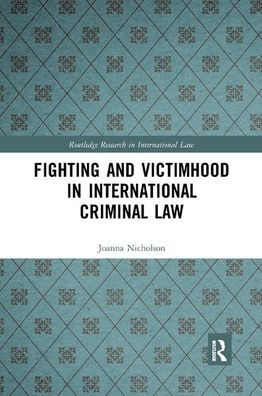Among the topics which are explored are: how have international criminal courts and tribunals untangled lawful casualties of war from victims of war crimes? How have they determined who is a member of an organised armed group and who is not? What crimes can those who fight be victims of during hostilities? When does it become relevant in international criminal law that an alleged victim of a crime was a person hors de combat rather than a civilian? Can war crimes be committed against members of non-opposing forces? Can persons hors de combat be victims of crimes against humanity and genocide? What'special considerations surround peacekeepers and child soldiers as victims of international crimes?
The author carries out an in-depth exploration of case law from international criminal courts and tribunals to assess how they have dealt with these questions. She concludes that the import of fighting upon victimhood in the context of international criminal law has not always been appreciated to the extent it should have been.
Among the topics which are explored are: how have international criminal courts and tribunals untangled lawful casualties of war from victims of war crimes? How have they determined who is a member of an organised armed group and who is not? What crimes can those who fight be victims of during hostilities? When does it become relevant in international criminal law that an alleged victim of a crime was a person hors de combat rather than a civilian? Can war crimes be committed against members of non-opposing forces? Can persons hors de combat be victims of crimes against humanity and genocide? What'special considerations surround peacekeepers and child soldiers as victims of international crimes?
The author carries out an in-depth exploration of case law from international criminal courts and tribunals to assess how they have dealt with these questions. She concludes that the import of fighting upon victimhood in the context of international criminal law has not always been appreciated to the extent it should have been.

Fighting and Victimhood in International Criminal Law
220
Fighting and Victimhood in International Criminal Law
220
Product Details
| ISBN-13: | 9780367877774 |
|---|---|
| Publisher: | Taylor & Francis |
| Publication date: | 12/12/2019 |
| Series: | Routledge Research in International Law |
| Pages: | 220 |
| Product dimensions: | 6.12(w) x 9.19(h) x (d) |
